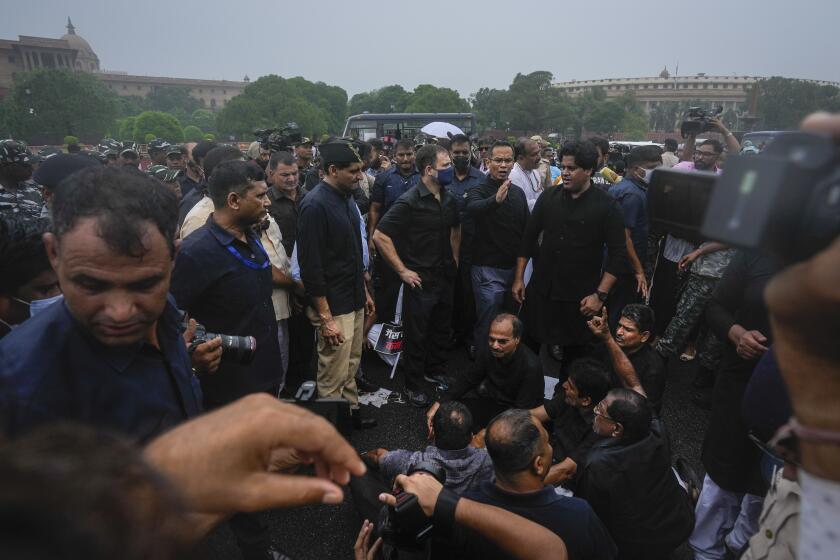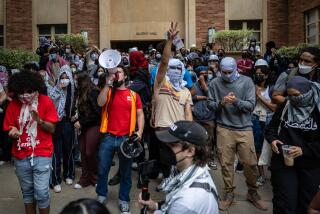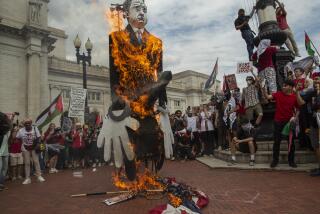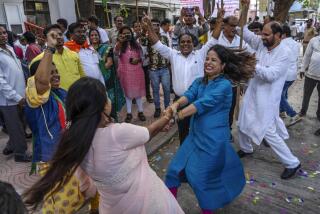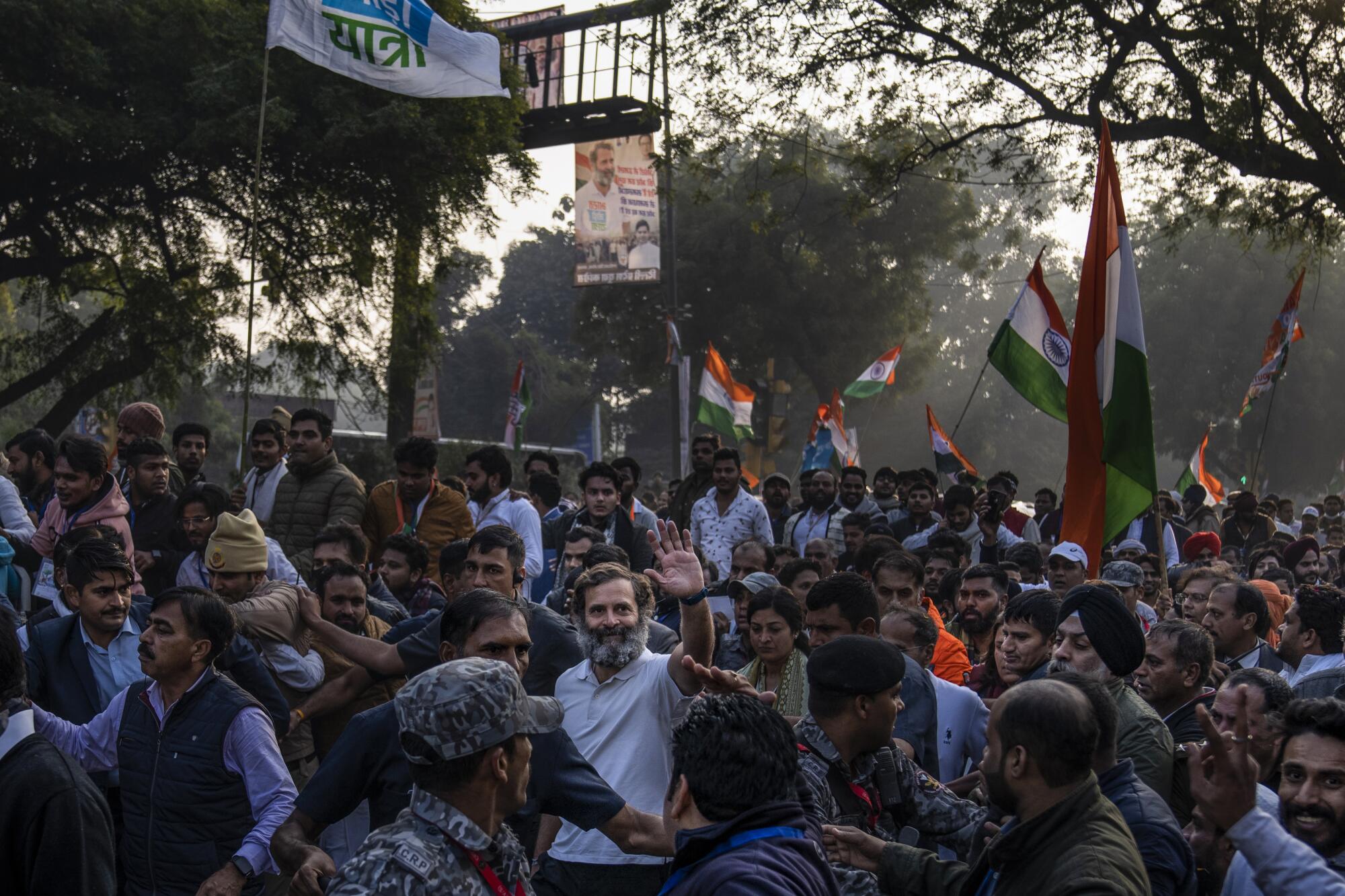
- Share via
JALANDHAR, India — On a cold, breezy afternoon in this city in the northern state of Punjab, a crush of people lined both sides of the main road, pushing and shoving to get a better view.
Locals peered at the crowds from their balconies, cradling toddlers with one hand and positioning their phones for a photo with the other. Security forces, parked alongside the sidewalk, gripped a long rope to keep the public from spilling into the streets.
They were waiting for the arrival of Rahul Gandhi, leader of the Indian National Congress and heir to a once-dominant political dynasty, who is leading a march that traverses the length of his country to challenge Prime Minister Narendra Modi and his Bharatiya Janata Party, known as BJP.
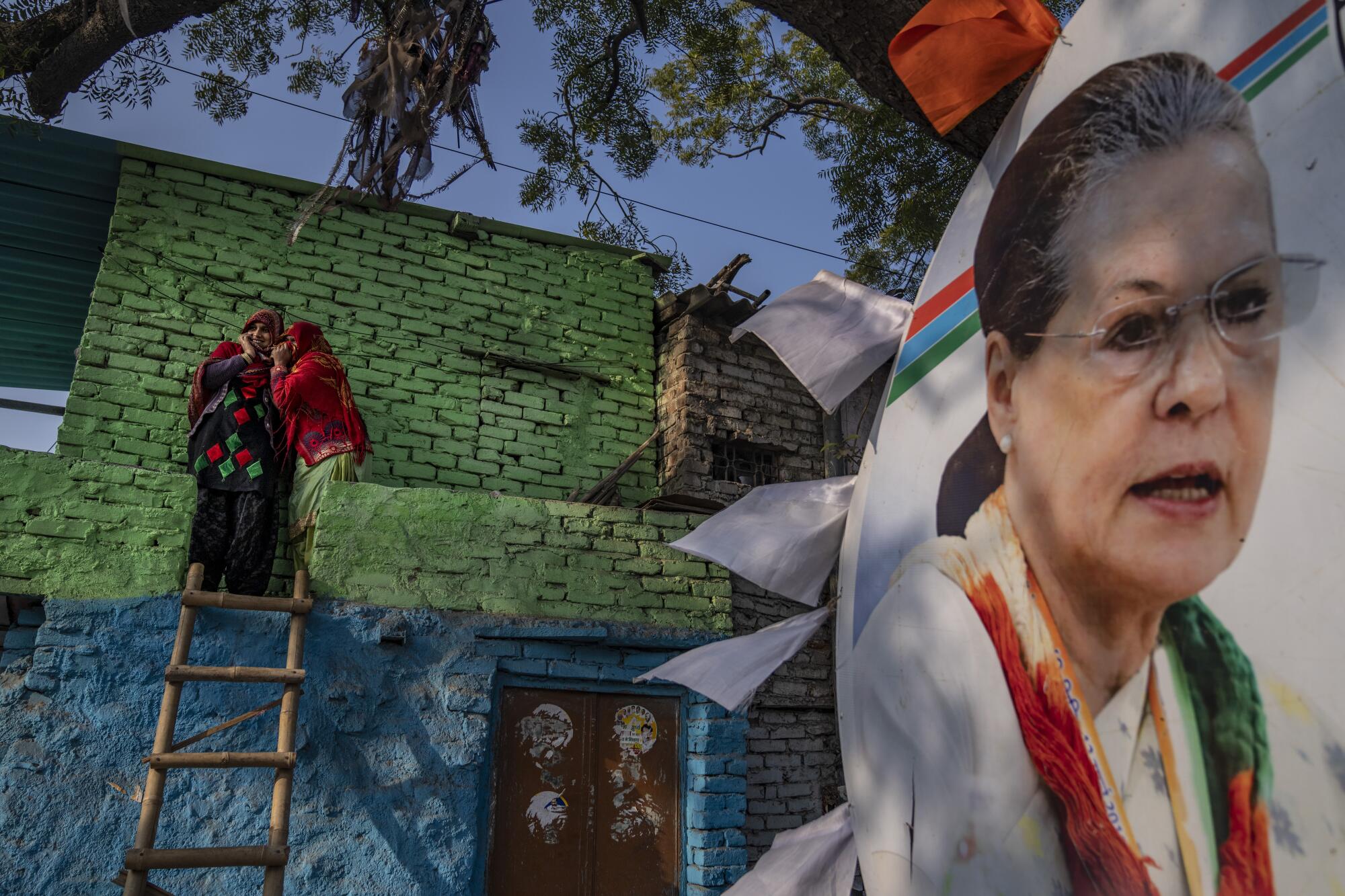
Gandhi and his followers say their country is being divided along religious lines under Modi’s hard-line right-wing government, favoring the Hindu majority over Muslims and other minorities. The march christened the Unite India Rally is one of the most significant political campaigns leading up to the national election, still a year away, when Modi will be seeking his third term.
The rally started on Sept. 7 in Kanyakumari, at the southern tip of India, and is supposed to conclude by the end of January in the disputed territory of Kashmir.
Gandhi will have covered 2,175 miles, walking through 12 states. On many days nearly 1,000 people are walking with him.
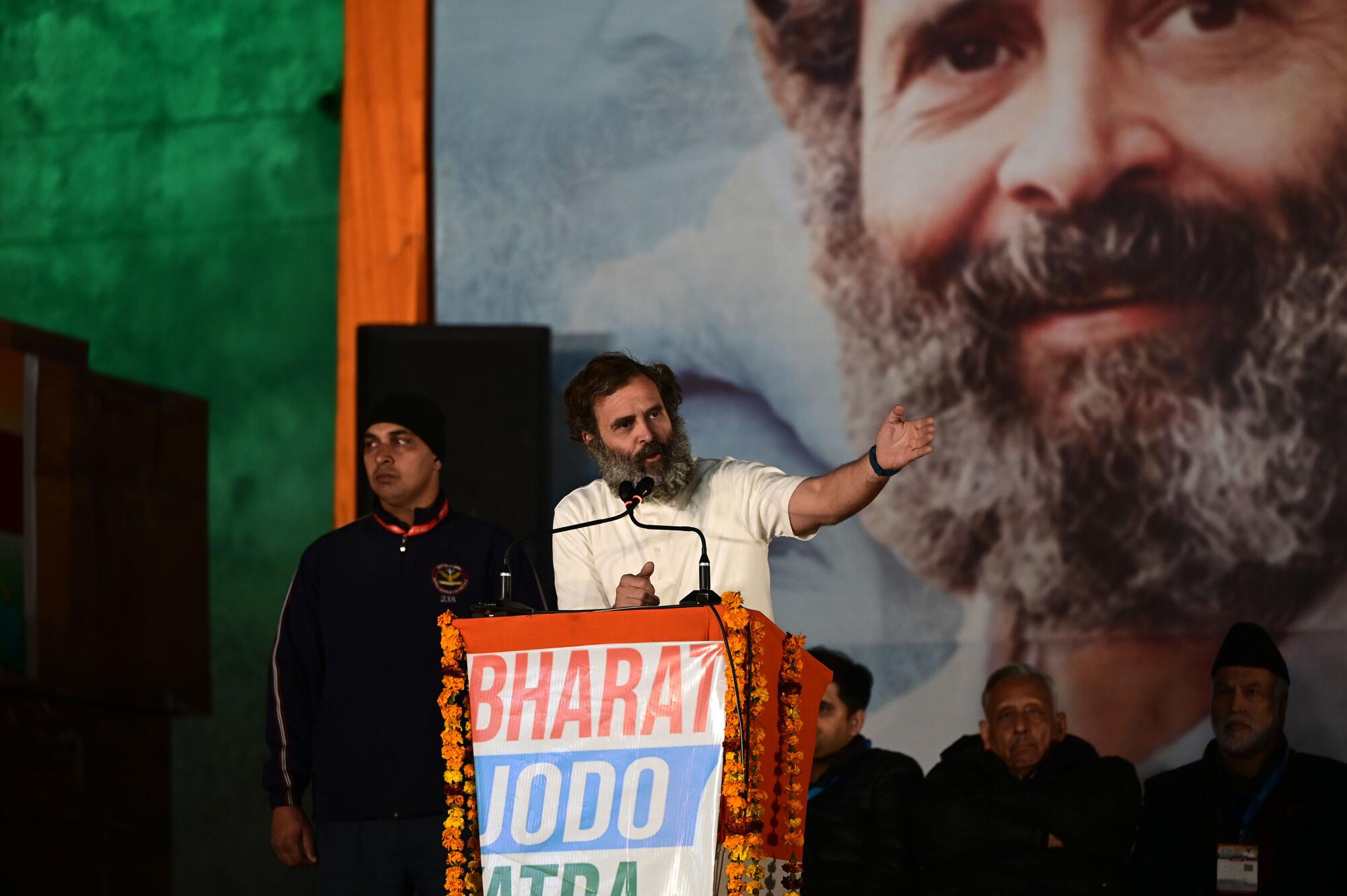
With its emphasis on spreading a message of love and unification and raising important issues like unemployment and inflation, the rally is a counterpoint to a longtime narrative that has suggested the 52-year-old Gandhi — whose father, grandmother and great-grandfather served as prime ministers of India — was a reluctant politician who excelled at partying and had little interest in the hard work of governing.
Over the last few months, the rally has received notice and support from institutions that are not associated with the government — nonprofits, universities, professional organizations, cultural groups, noted lawyers and economists, stand-up comics and Bollywood actors. Even in it last leg, the rally is still drawing large crowds.
But will it be enough to overcome the decline of the Indian National Congress, or INC, which has struggled for years with defeat and scandal, and the current government, which has a tight grip on civilian institutions, including the court and media?
::
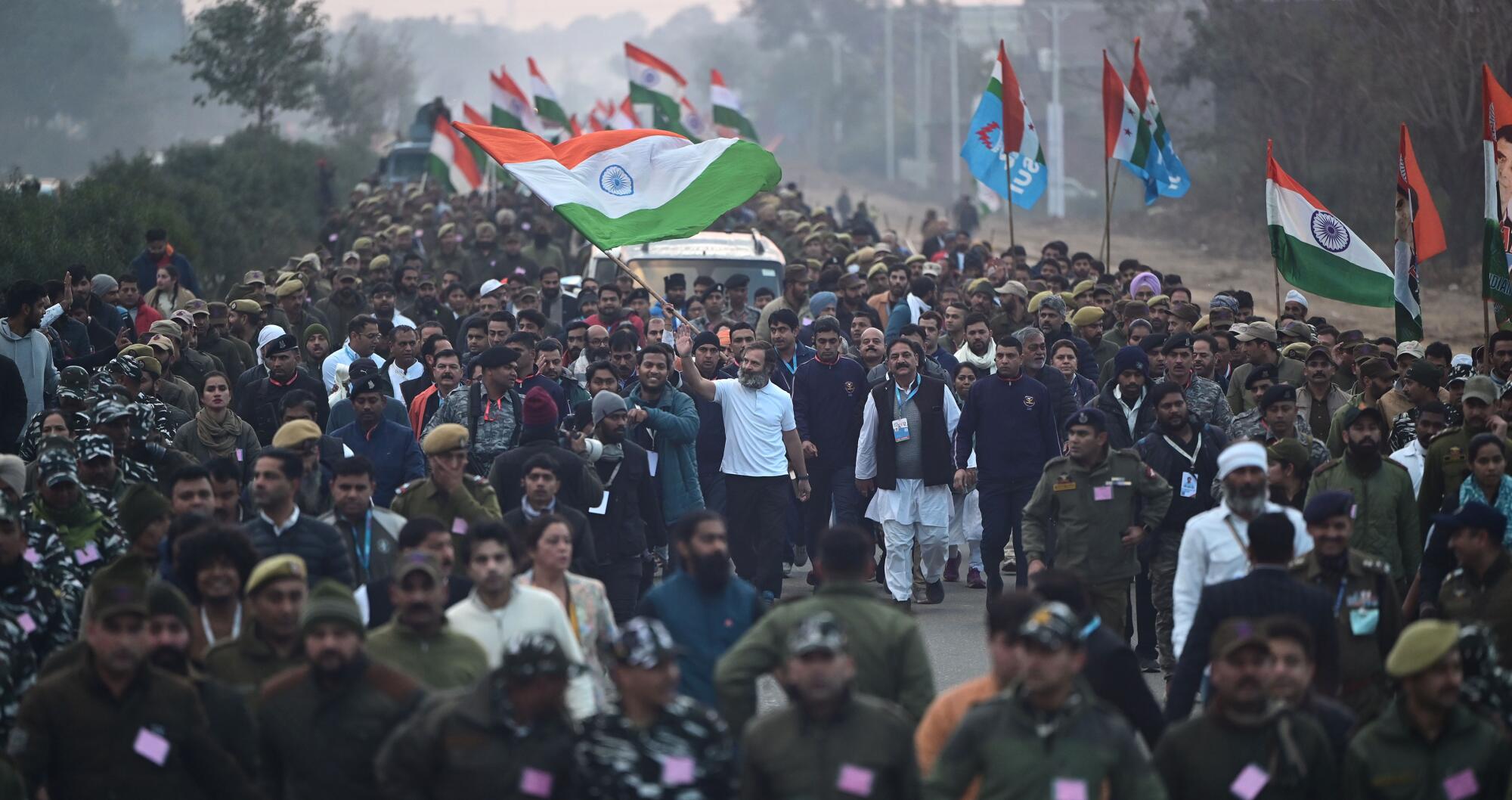
Sheela Devi was among those watching the rally from their homes. Wrapped in a muffler and a monkey cap, she said she was there “to give [Gandhi] my blessings,” and added: “He is raising the right issues.”
A homemaker with a husband who works as a driver at a car rental company, Devi, 45, is worried about rising costs.
“The fuel has gotten expensive. The gas cylinder [for home heating] has gotten expensive,” she said. “These issues are being ignored. … It takes courage to stand up with the message of peace in these troubled times.”
She paused when she heard people chanting: “Rahul Gandhi for the win.”
“Is he here?” Devi asked a bystander. “I think so,” he responded, and whipped out his cellphone to make a video call to his wife.
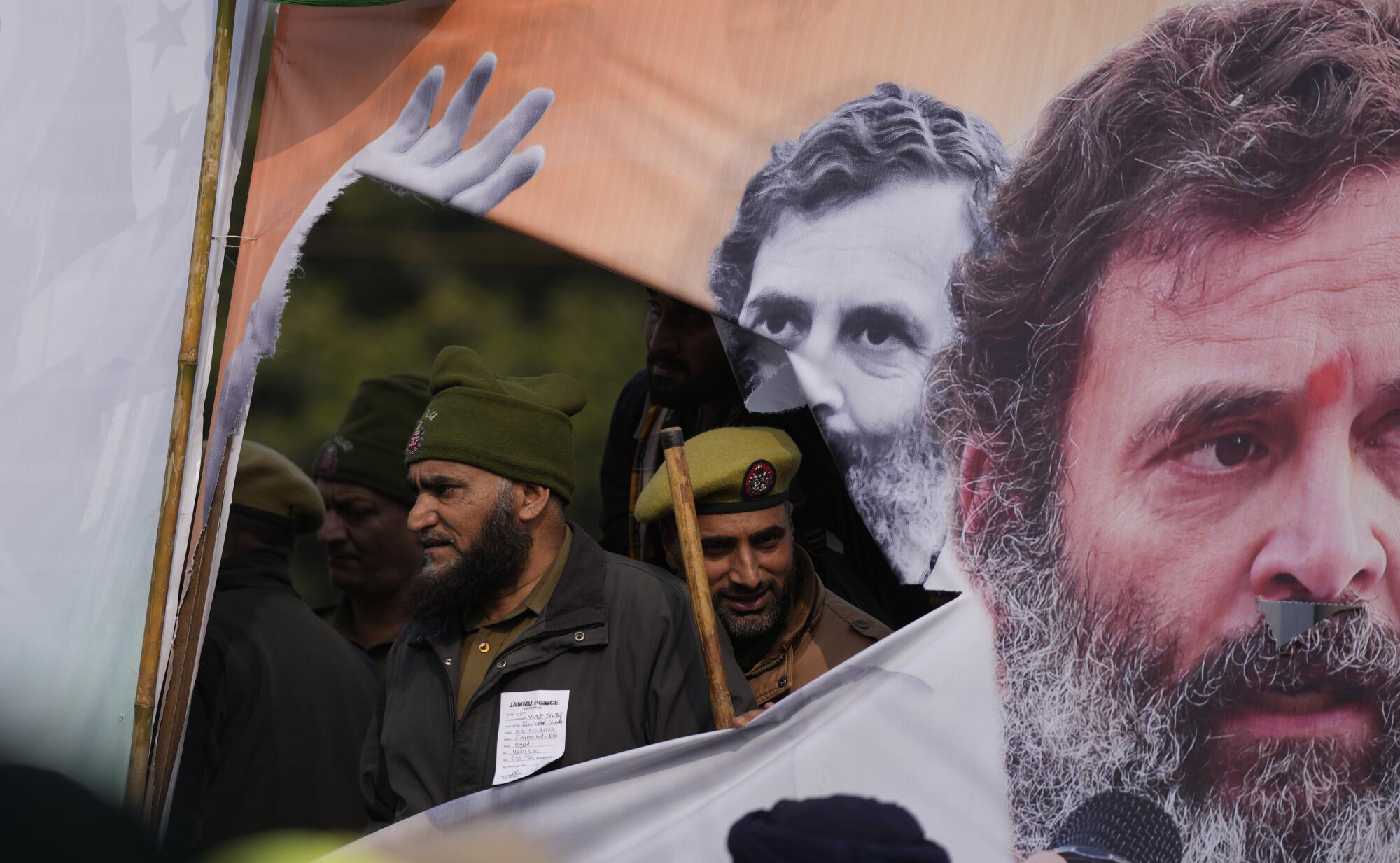
The chants grew louder as Gandhi approached. His supporters, wearing caps and T-shirts bearing his image, started waving the national flag. Their energy seemed contagious.
The only person wearing a short-sleeved shirt in a sea of jackets and shawls, Gandhi waved and smiled through his ruffled salt-and-pepper beard, which he hasn’t shaved since the rally began. His pace was brisk, but he stopped on occasion to greet people who wanted to shake his hand or hug him, politely engaging before moving on.
“We have met people from different states, different cultures and different backgrounds,” said Vaibhav Walia, 32, an official with the Indian National Congress who has been with the rally from the start. “Fishermen, factory workers, youth, farmers have all come up to us and shared their concerns.”
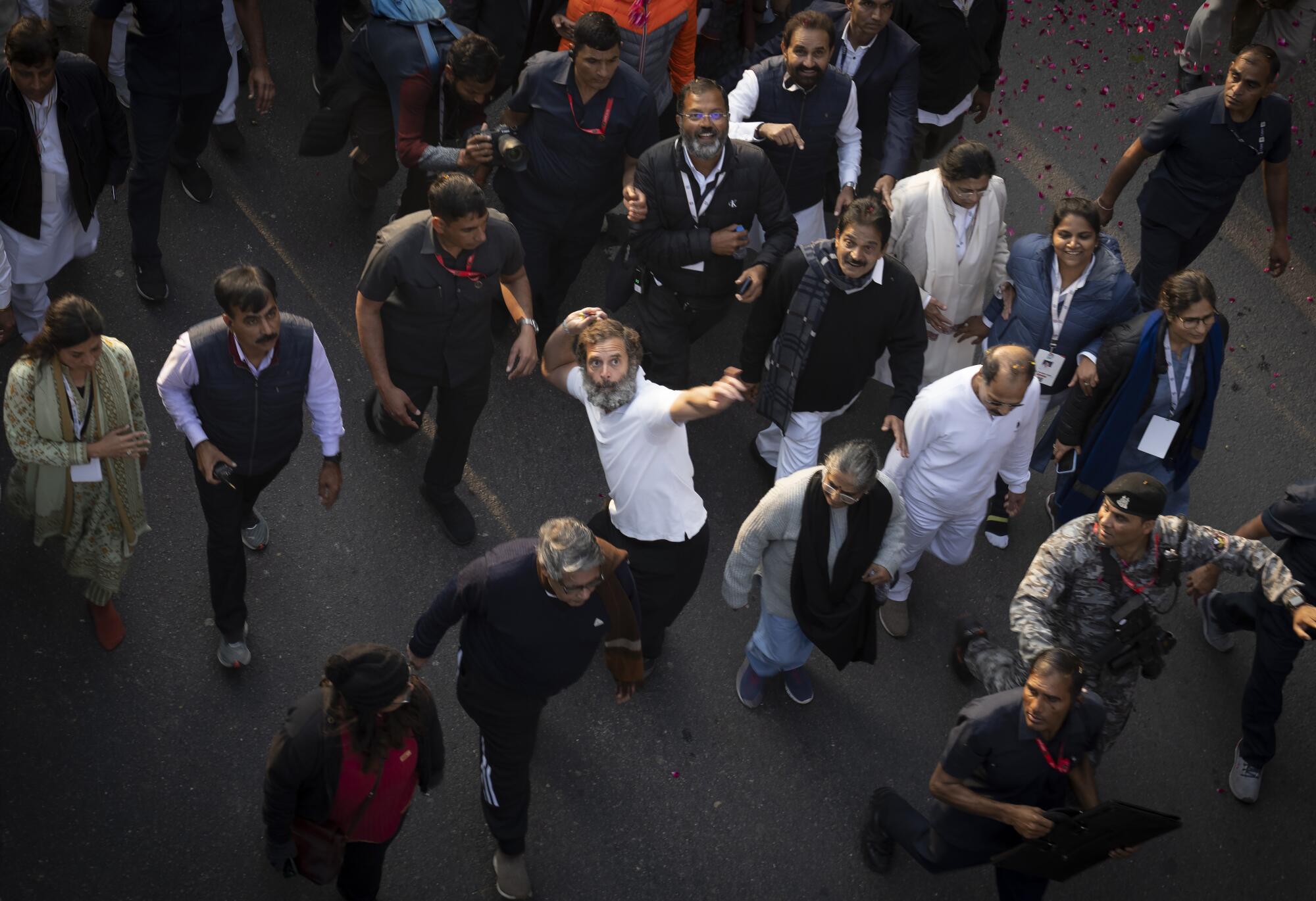
One encounter, Walia said, stands out. In southern India, a Muslim woman grabbed his hand and told him she feared for her two adult sons because of the atmosphere in the country. “Nobody should live in fear because they belong to a particular religion,” he said.
Each day, the march, funded by the Indian National Congress, covers 15 miles in two stretches. The first continues until 10 a.m., pausing for Gandhi and his supporters to have a tea break and lunch. The march resumes at 3 p.m., and about three hours later, the participants stop at a prearranged camp to eat and sleep.
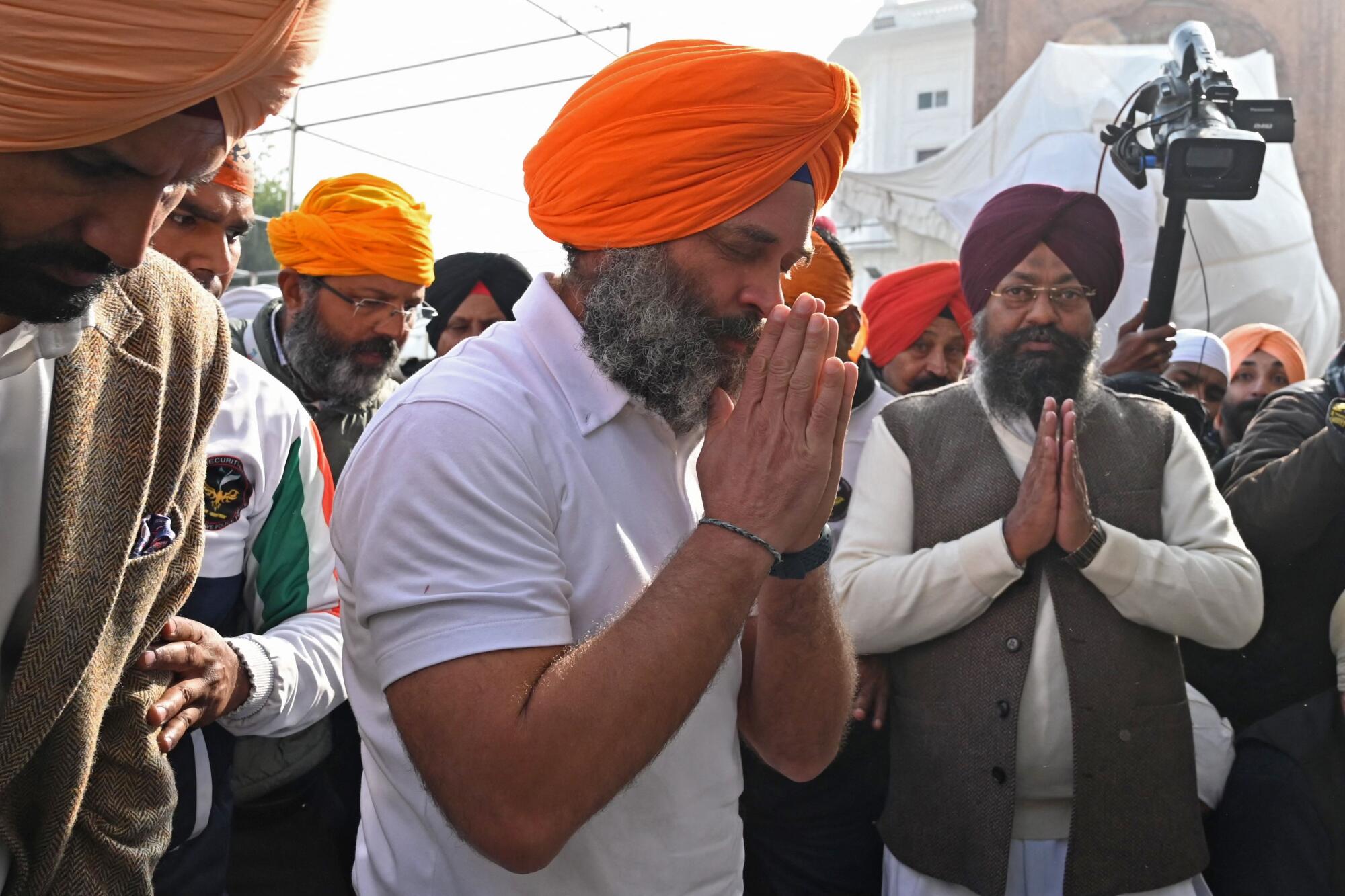
Gandhi and his party colleagues sleep in containers that have been turned into living quarters — a business class of sorts — and everyone else sleeps on mattresses spread out on a floor. In the second week of January, temperatures dipped below 40 degrees — which prompted some complaints.
“It is particularly difficult during this biting cold,” said Shakeel Ahmed, 52, a Mumbai-based advocate and activist, who also started walking on Sept. 7. “The sanitation facilities for us are inferior. In one state, a cultural program was arranged. When I tried to enter, I was told it is only for Gandhi and his associates.”
But Ahmed said he’d decided to ignore the differential treatment for the larger cause.
“I have managed to get a lot of hope from the rally,” he said. “A few days back, I met a 90-year-old man who had walked two miles just to see Rahul Gandhi. I met so many youngsters who turned up to express solidarity. There is a lot of hate being perpetuated through the media and the ruling party. It is reassuring to see so many people, especially youth, turn up and talk about love and unity.”
Since its independence in 1947, India has transformed from a poverty-stricken nation into one of the world’s fastest-growing economies.
Mangilal Manju, 22, a carpenter from the western state of Rajasthan, joined the rally the first week of October, leaving work (and $300 a month in earnings) behind. “My parents were reluctant initially,” he said. “But this is an important initiative, and we have to back it as much as possible. This is for the future of India.”
Fifteen days into the rally, Manju concluded that mainstream media, frequently accused of favoring Modi, were not covering the rally. So, he started his own YouTube channel and began posting videos shot on his phone. The most recent has garnered more than 1 million views.
::
Line break
For decades, the Indian National Congress was either in power or provided a strong opposition. But today it’s at a low point, with 52 out of 543 seats in Parliament. Party workers were demoralized.
Gandhi, who has emphasized secular values and pluralism during the campaign, has been criticized for a lack of vision. Saba Naqvi, a senior political journalist based in New Delhi, said the party’s rhetoric doesn’t match its reality on the ground when it comes to electoral politics.
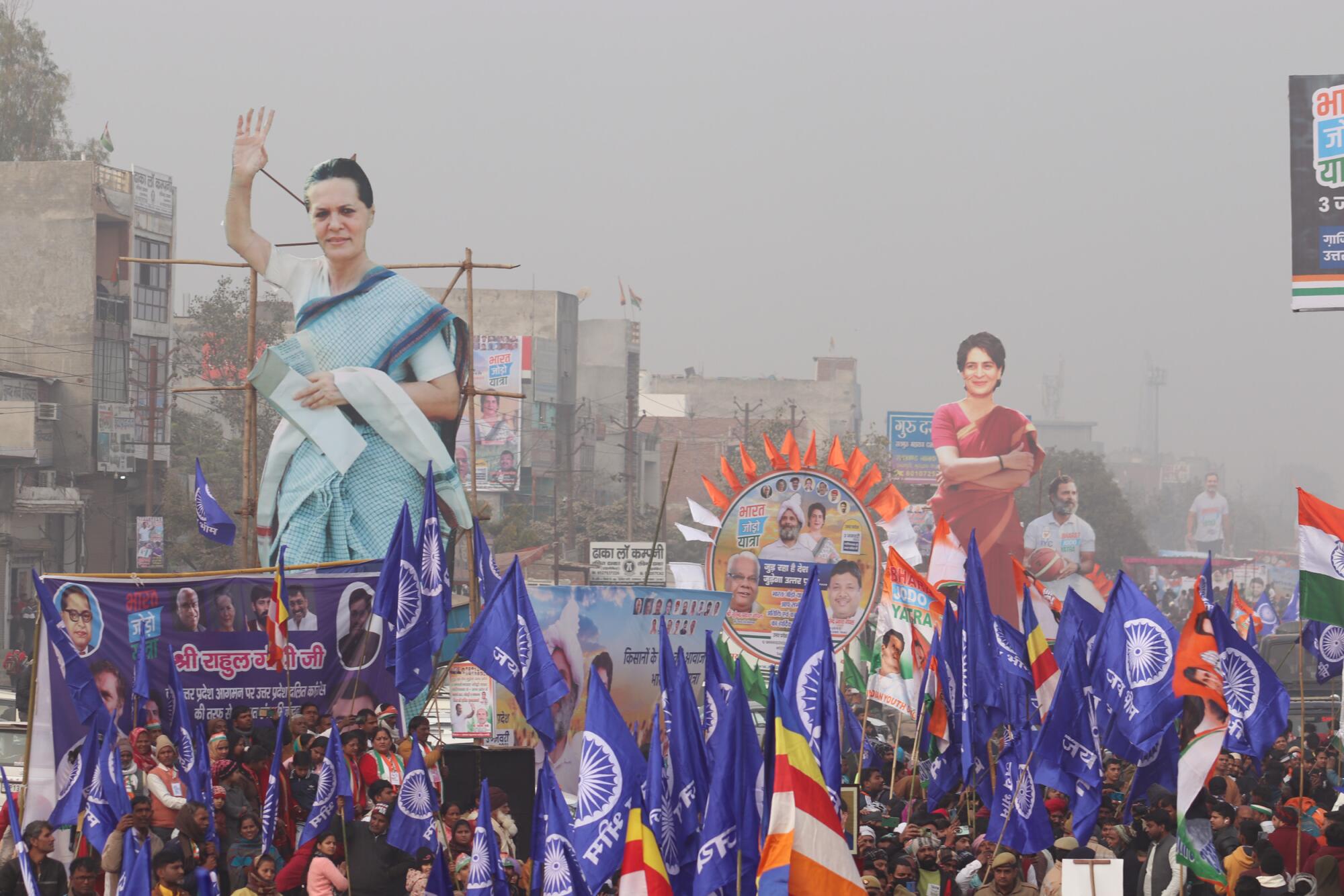
“I don’t have the confidence in the Congress’ ability to directly take on the BJP even today,” she said. “A lot depends on how the party workers follow up the impact of the rally on the ground.”
But Naqvi believes the rally has cast Gandhi in a better light. It’s a “success in rehabilitation of Rahul Gandhi’s image and in reminding us of our constitutional moorings. It’s a voice against all pervasive cronyism of our times and rampant inequality.”
Shivam Vij, a columnist based in New Delhi, said the rally has helped the Indian National Congress consolidate its base. “But the real challenge is to recover the ground it has lost to Modi in the last eight years,” he added. “The Congress needs to keep this momentum for a year and half until the next elections. That will help them get swing voters that are on the fence.”
Political commentator turned political activist Yogendra Yadav, a staunch critic of Gandhi and his party in the past, said he was unsure if the march would have an impact. “But the response has exceeded my expectation,” he said. “The rally has activated the demotivated cadre of INC. There is a certain positivity and proactiveness that you didn’t associate with the party in years. [Gandhi] was seen as someone who was pampered, ignorant and arrogant. It has all been smashed by the rally.”
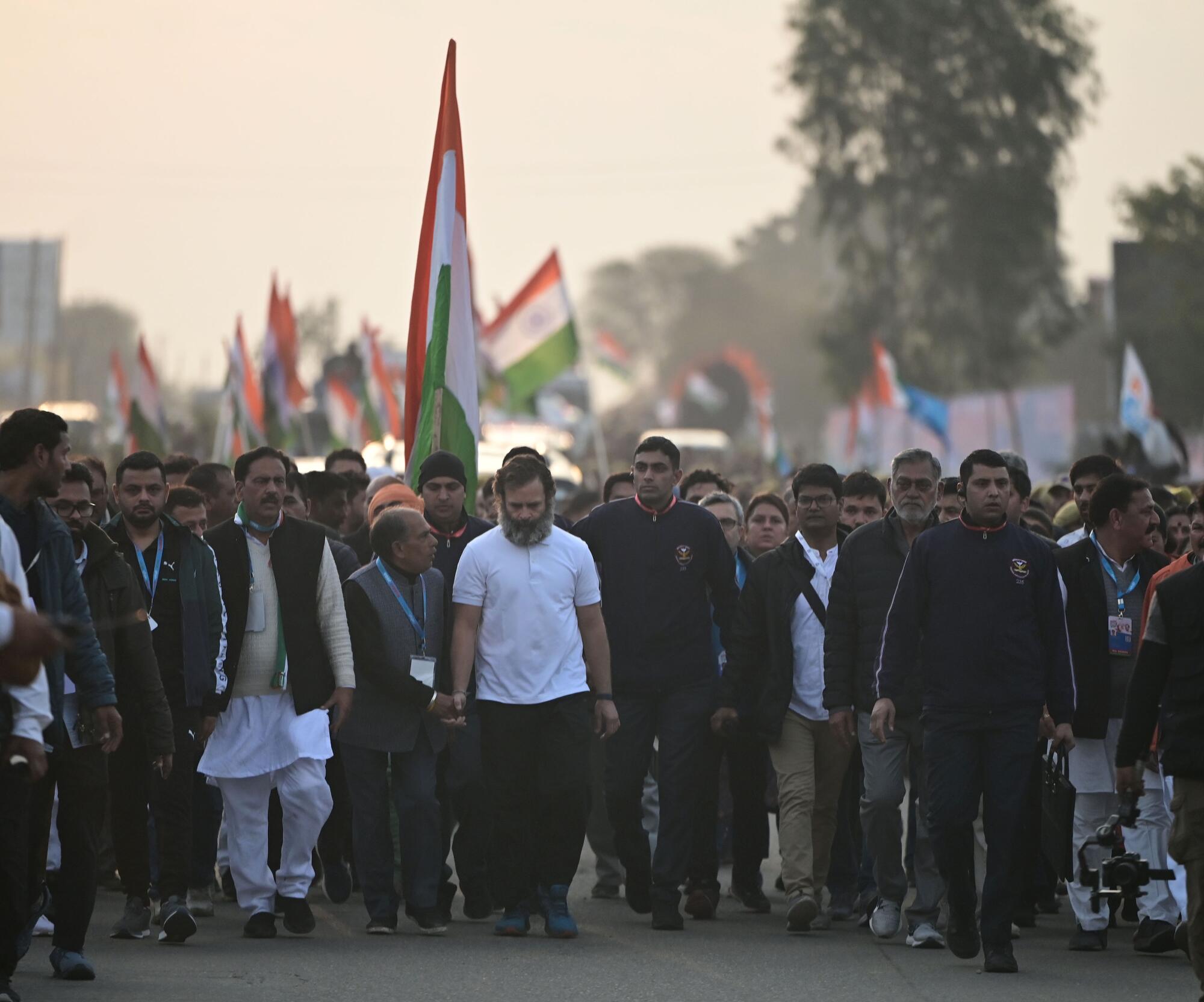
More to Read
Sign up for Essential California
The most important California stories and recommendations in your inbox every morning.
You may occasionally receive promotional content from the Los Angeles Times.
